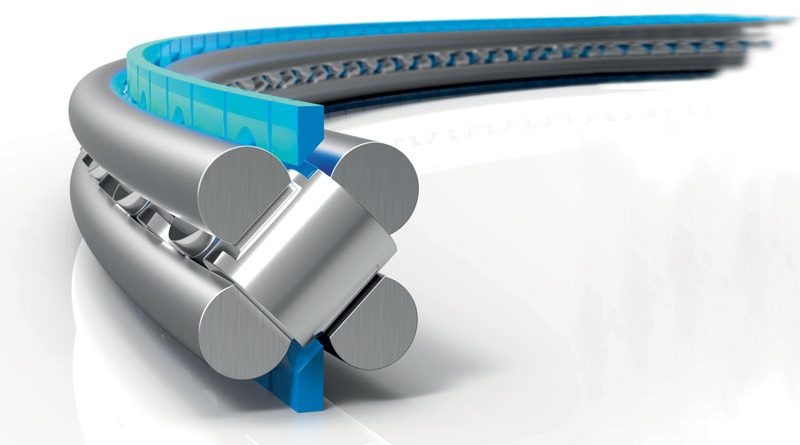Producing Ultralight Bearings from 3D Printing
Choosing the most suitable material and limiting its quantity are the fundamental ingredients to obtain a substantial reduction of the weight and inertia involved in a bearing. Combining 3D printing with the Franke element bearing results in solutions that meet very specific requirements.
by Alma Castiglioni
Integrated into an enclosing housing, wire race bearings absorb forces from all directions. In order to adapt wire race bearings to the requirement of the application, numerous options are available in terms of wire profile, raceways, ball diameter and material. By using lightweight materials and state-of-the-art manufacturing techniques, Franke’s lightweight bearings enable substantial weight, energy and space savings with comparable rigidity and maximum precision over the entire service life. The advantages are apparent: alternative materials such as 3d printing, high-strength plastic or carbon (CFRP) allow significant weight savings; low moving masses ensure energy efficiency and smooth running; a free design of the enclosing construction allows savings in connected assemblies. Besides many lightweight materials have positive secondary properties, such as low material expansion or non-magnetism.
Through investigations and analyses, the enclosing parts of bearing assemblies can be designed so that the material used and the wall thickness meets the loads.
However, there are often limits to the design. Not everything that looks good on the CAD screen can be manufactured in reality, and this because of both the limitation in machining production and the economic restrictions, in particular for mold making for CFRO parts.
3D printing is remixing the cards
In 3D printing, objects are built up layer by layer from metal particles. This is also called “additive procedure” and implies a reversal of conventional manufacturing methods, which are usually associated with the removal of material.
The layered structure of the parts enables completely new design scenarios. Internal honeycomb structures, vary wall thickness and even a mix in the texture of the material are possible. Another advantage of this technology is the fast availability. An appropriately configured CAD file is sufficient to put the printer into action. Shortly thereafter, the required parts are available for further processing. Starting with a batch size 1, 3D printing becomes the ideal manufacturing method, as no further tools are needed. This results in a number of advantages for customer of Franke’s 3D printed bearings: extremely low weight and compact design; bespoke design according to your requirement; bearing diameters from 80 to 30 0mm; batch size 1 possible with fast availability. The weight saving of 3D printed bearing assemblies over conventional manufactured bearings are huge. With the same bearing diameter and integration of a comparable wire race bearings in the housing rings, the weight saving compared to a conventional steel bearing is almost 90%
An interesting application in the aviation industry
Designers of components for aviation use every opportunity for weight reduction. Nowhere else does each gram weight have such a direct impact on the performance of the aircraft as well as on the fuel costs.
One application for wire race bearing with surrounding parts from the 3D printer is the mount of a patient’s bed in a rescue helicopter. The hand-swiveled bed can be rotated easily and evenly to facilitate the loading and unloading of the patient. The special bearing is characterized by extremely low weight and insensitivity to temperature fluctuations and vibrations: all this weighs 800 grams only.

